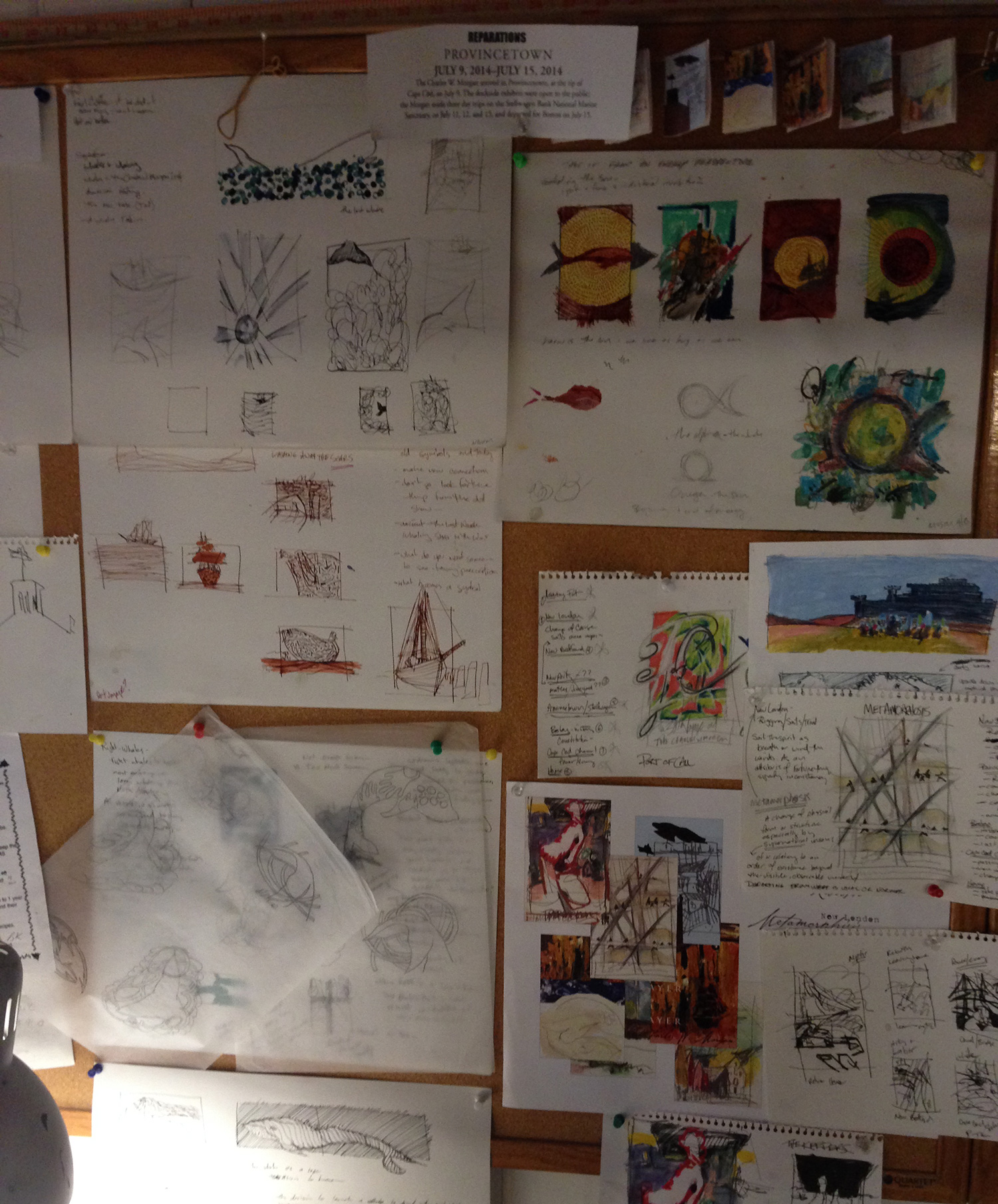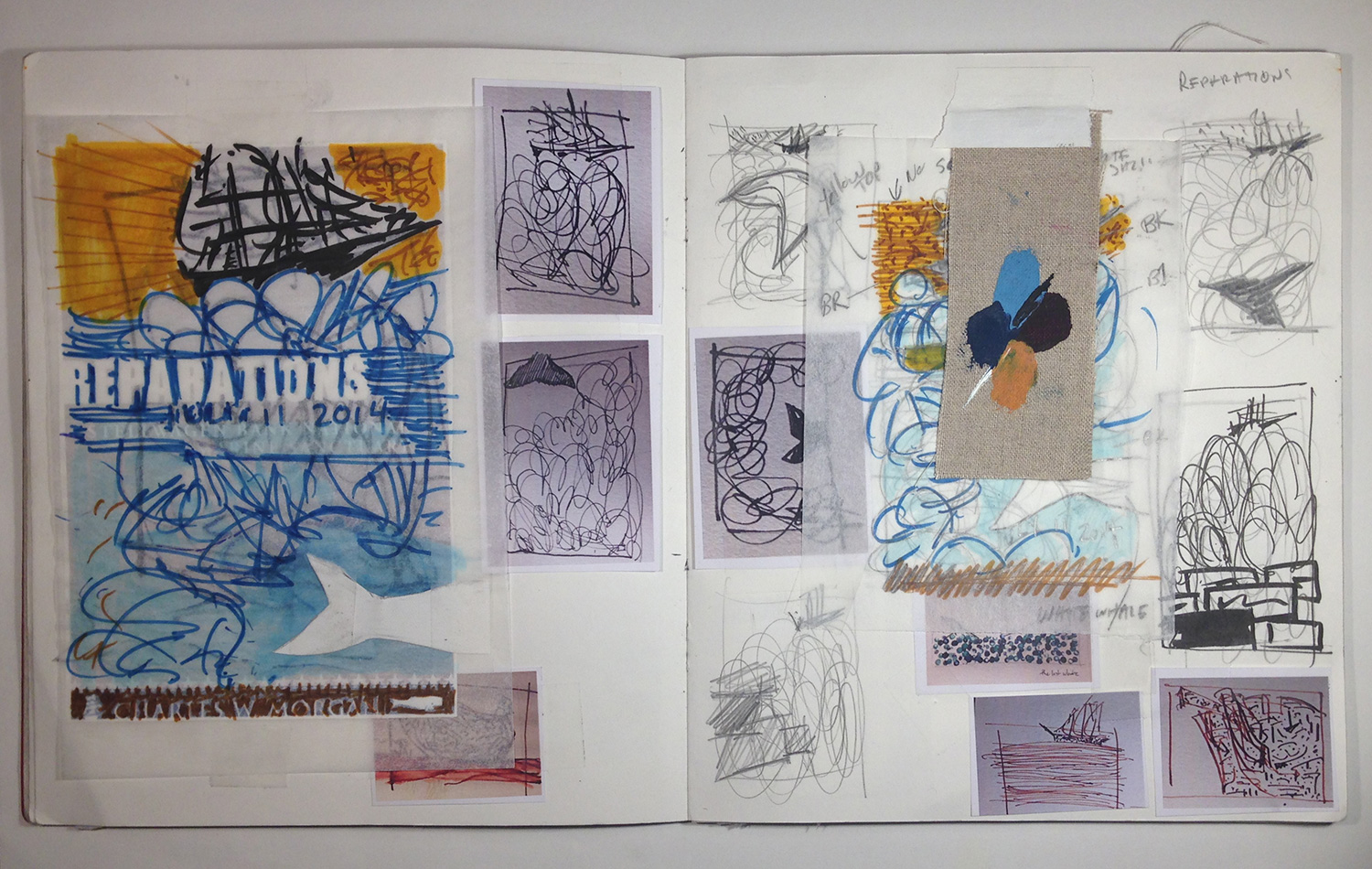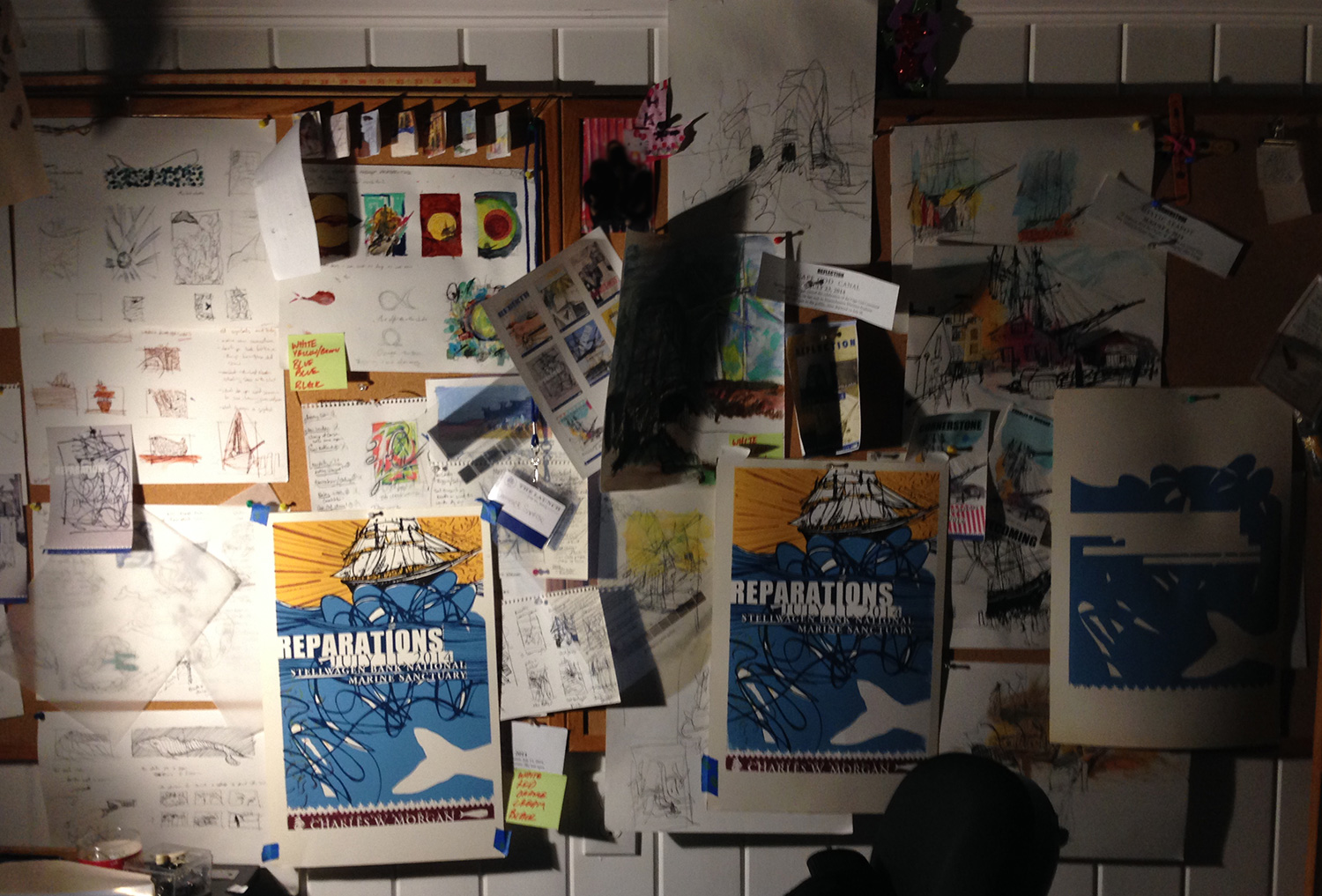The trip to Stellwagen Bank National Marine Sanctuary was another first—my inaugural visit to Cape Cod.
I have traveled around New England my entire life but never the Cape. While it is truly beautiful, I would advise midnight travel in the middle of the week—be warned, it is popular. The Dalvero crew spent a couple of days out in Provincetown, RI working on a group mural for the Mystic exhibit while the Morgan spent time making peace with the whales. I missed my moment aboard a whale watching tour, but apparently it was everything my colleagues could have dreamed of. Next time I’ll make sure to take the excursion. We watched the Morgan at sea while we worked on a 16 foot mural on the seaside docks. It was a beautiful moment.
The greatest part about the Stellwagen leg of the journey is that it focused on the relationship between the Charles W. Morgan and the whale, an ever present “elephant” in the room. There is no denying the history of a whaling ship, but it is also our history—how we arrived to this moment in time and all that we have accomplished. The restoration was an incredible process and we all looked to wrap it in the healing process that kept being whispered by the crew working on making her sea worthy again in part for the sake of educating visitors about that history. Stellwagen was the stop along the journey that drew in all of the years of ecology, reparations, and ocean symbolism that was collected with each visit to Mystic and the various landmark locations along the Atlantic.
The irony of having so much material from years of work is that in the end it started to pare down to a few essential pieces and most of the work was hidden in a few graphic elements—the Morgan chasing the light of the sun and the life it brings and the whale (only seen by its tail) freeing itself from the tangles of history. As the project came to a close and the direction for the gallery work took form, I ended up working out all of the possible ideas in a small sketchbook, carrying it around for months as it became layered with ideas and revisions. Everything from layout and patterns to type and color were hashed out in this little book.
Part of having never printed on fabric, let alone Belgian linen canvas, were the unknown factors of how the ink would lay down—and 5 yards of canvas only goes so far. I originally set out with the idea of making two prints per image, but I was able to very precise with my trimming and I got an additional 7 banners out of it. I bought several types of tape to secure it for printing. You think that would be a nominal decision but it could make the whole thing go kaplooy. Securing it to “what” was the issue at first however. I ended up trimming down three masonite boards to tape down and keep the canvas flat and registered. It was a great moment when the first run of white went down on each canvas. After that the hours just went by as the colors dried and built up to a story for each port of call.
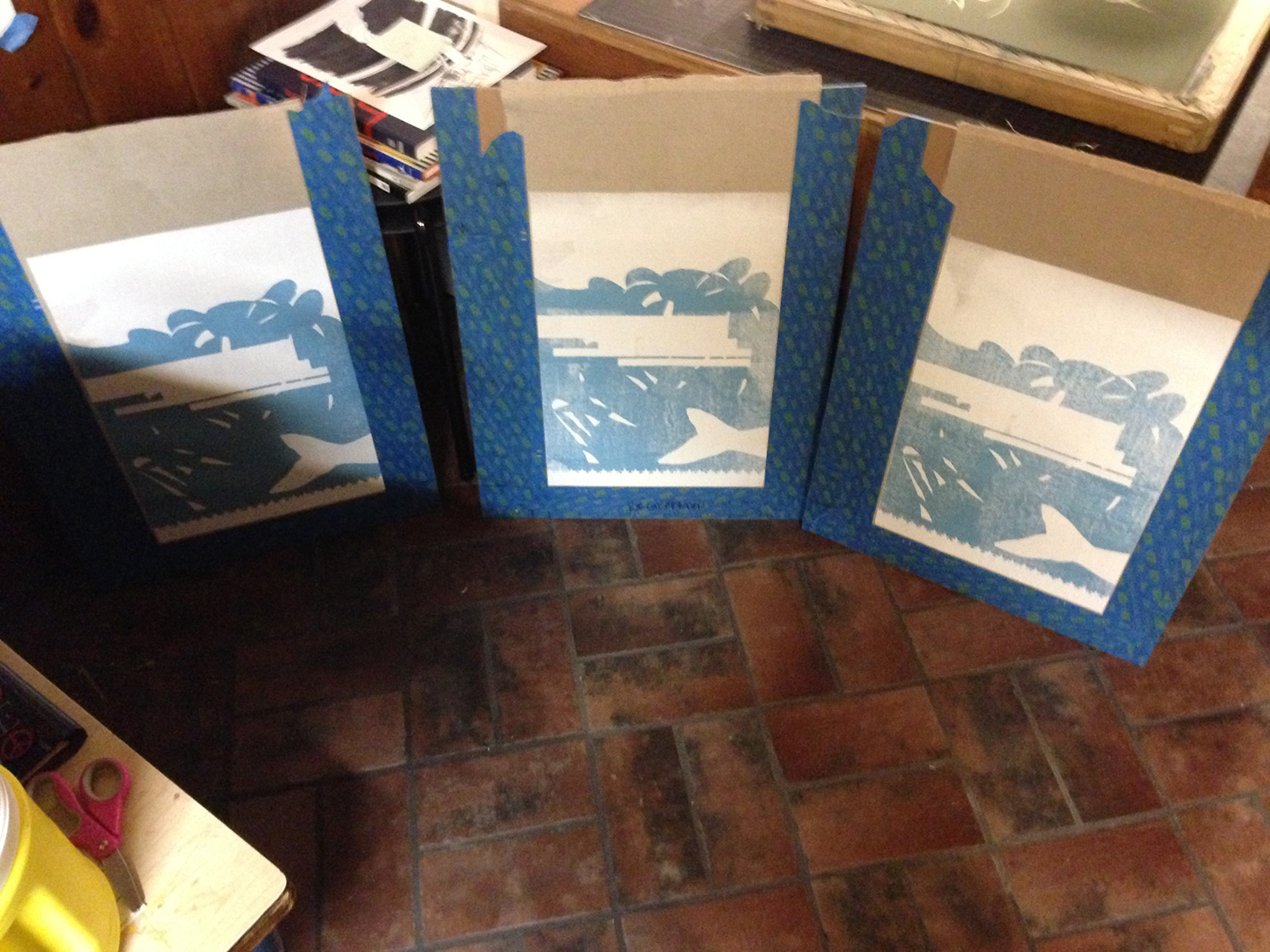
The wave film laying on my desk with the first sketch that led me to the idea tacked to the board above it.
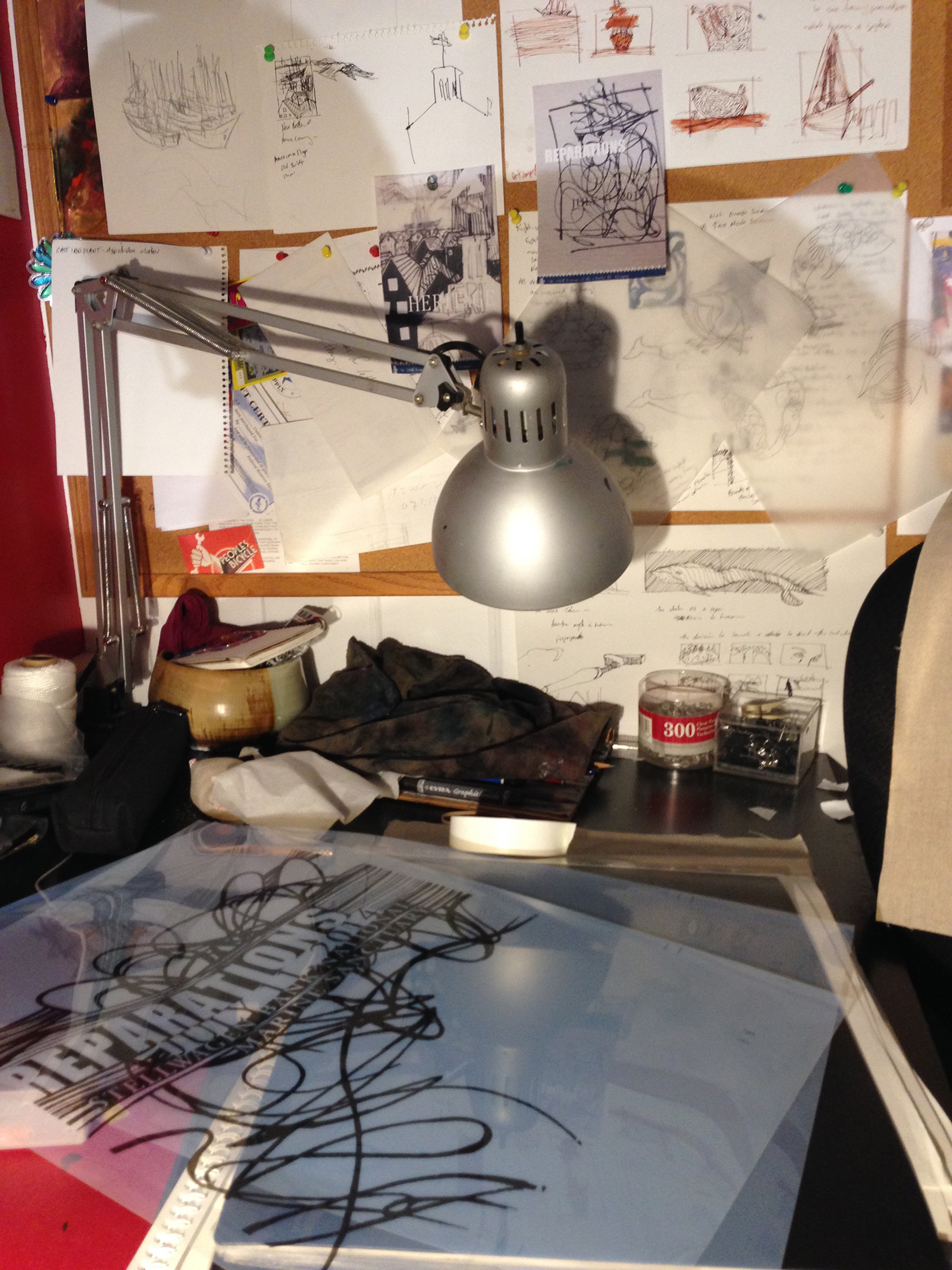
I guess I either got lazy or simply excited to get into the final print run because there are three test prints on the wall, all on paper, and yet only two seem to have been worthy of the last three colors. I have no idea what would possess me to not complete all three but something caused me to stray off course. With the light of the day gone, late at night and one light shining in the studio—the prints were drying and another set was complete. I’ld like to say that when it was all said and done I had a hard time taking all the material off the wall but this was one of those projects that ended on the right note. I see things I could have done to this day but a little over a year ago when the last print was pulled off the board, the wall came down and all the articles that brought me there were stored in a box. Another voyage, another journey—who knows—but definitely another time for sure.


